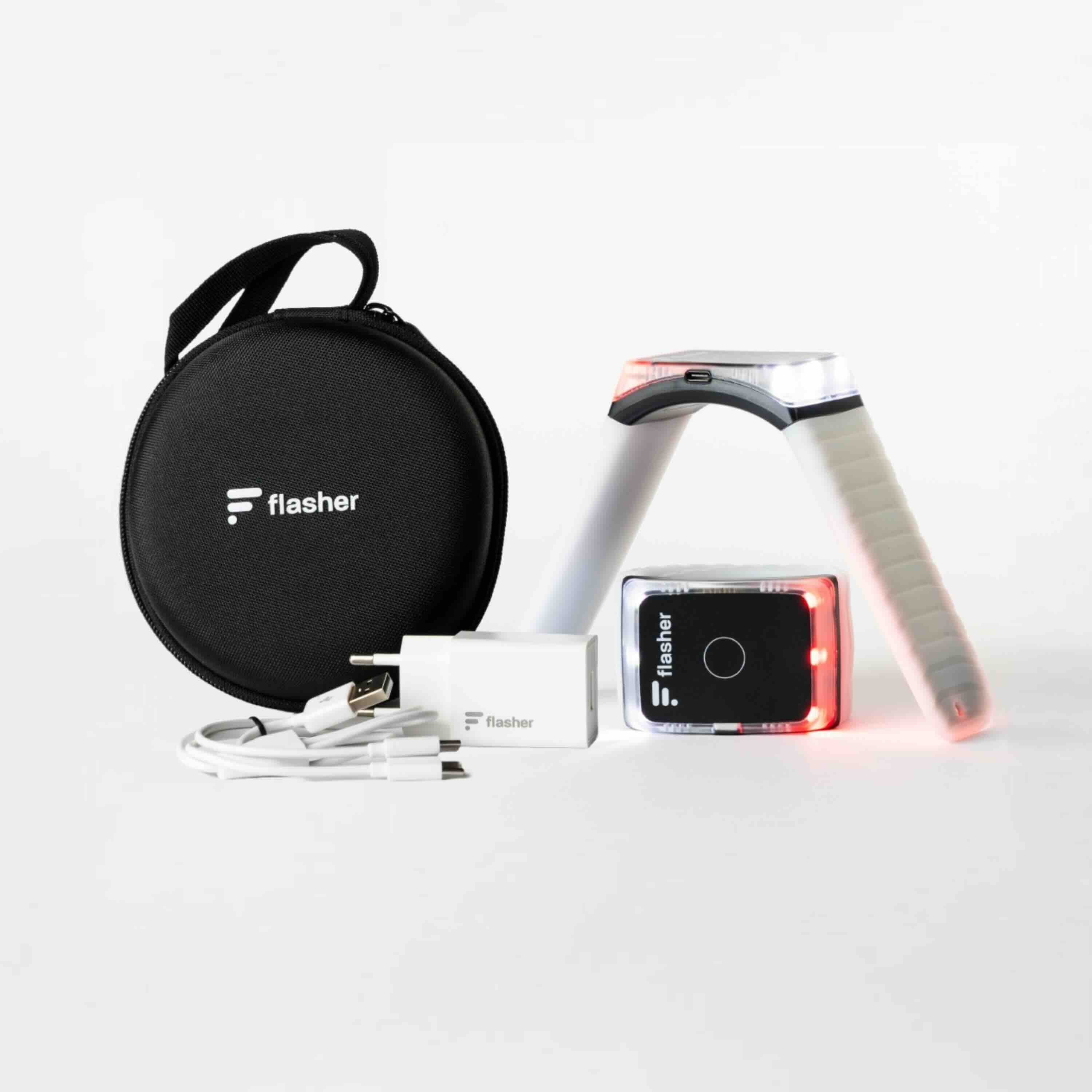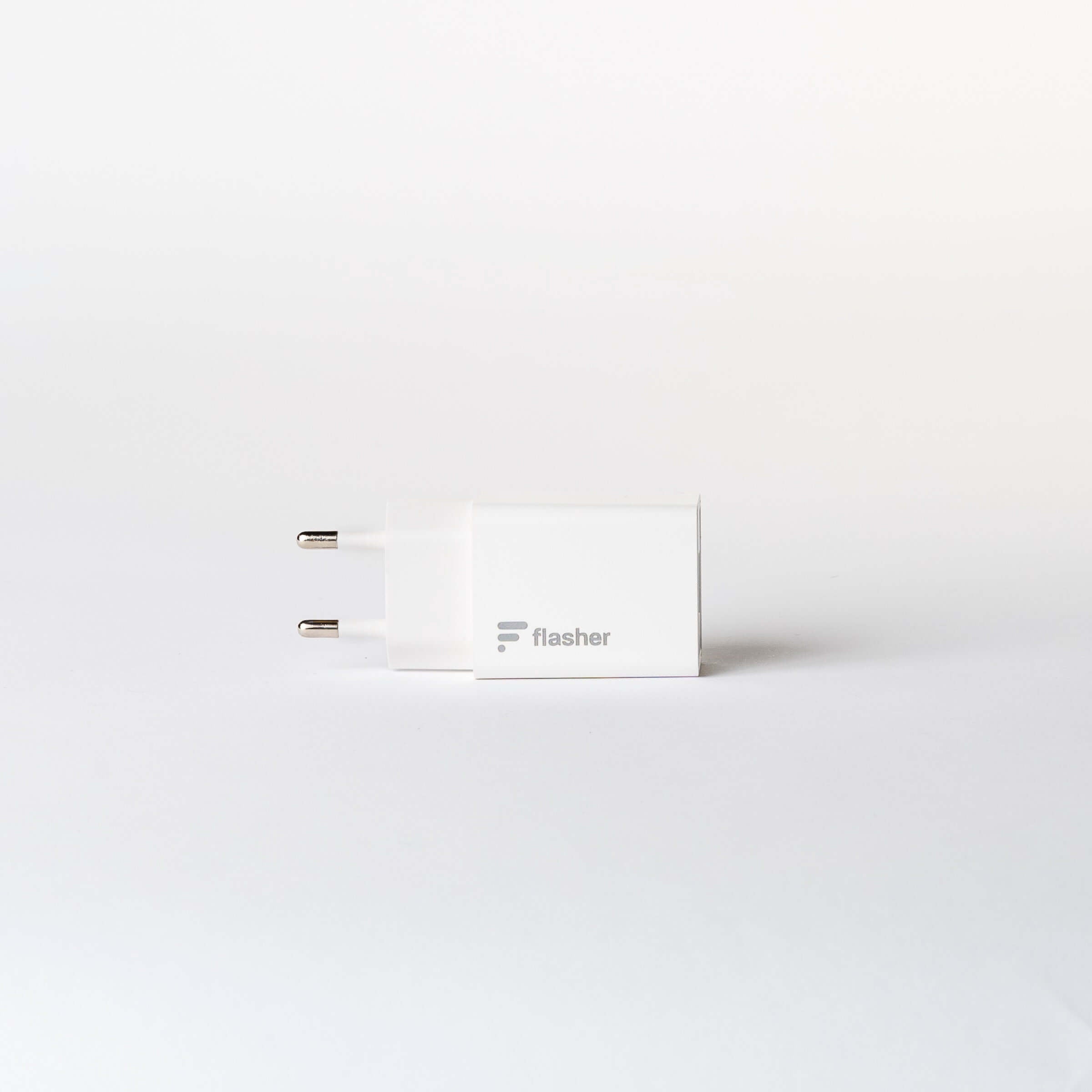Retrofitting indicators for your e-bike (Update 2025)

E-bikes can reach a speed of 25 km/h. S-Pedelecs can even reach speeds of 45 km/h. On straight stretches and flat roads, driving at such speeds is fun; you can get from A to B quickly and carefree.
However, as soon as the road is uneven , the speed combined with the weight of e-bikes can cost stability. The issue of stability is particularly important when turning : the turn must be indicated clearly and in good time; many people do this with a hand signal. To do this, however, you have to take your hand off the handlebars and travel with one hand. The better solution when turning is clearly a turn signal. But can you just retrofit any turn signal to your e-bike? What turn signal options are there and how much does retrofitting turn signals cost? Here you will find all the details about e-bike indicators and, above all, the advantages and disadvantages of the individual options:
The legal indicator for your e-bike
First of all: In Germany, indicators are currently not allowed to be retrofitted to e-bikes . Austria does not contain a ban on retrofitting indicators on e-bikes. Switzerland is the furthest along when it comes to road safety on bicycles: the Swiss Confederation has allowed turn signals to be retrofitted on bicycles since 2017.
Germany
The StVZO currently (April 2024) does not allow retrofitting indicators on e-bikes. The exact place for this is the last sentence of Section 67 Paragraph 5 StVZO. The three-line sentence essentially contains the information that direction indicators may only be attached to multi-lane bicycles or to bicycles where the structure of the bicycle completely or partially covers the hand signal . However, the federal government has announced a change to the StVZO that will allow indicators to be retrofitted to e-bikes and other bicycles. If you don't want to rely on it, you already have some options that are both StVZO-compliant and StVO-compliant: Indicators on the body, such as flashers, can be used on the e-bike without hesitation.
You can read more about the change to the StVZO in our article here: German federal government allows indicators on bicycles .
Austria
In Austria the situation is as follows: The bicycle regulations contain information about what must be attached to the bicycle, although direction indicators are not mentioned at all. However, nowhere in the StVO or bicycle regulations does it say that it is forbidden to retrofit indicators on the e-bike. Of course, it should be noted that drivers in Austria expect e-bikers to give a hand signal. Therefore, drivers pay particular attention to their arms and upper body. In addition, there are currently hardly any good turn signals mounted on e-bikes, but more on that below.
Switzerland
In Switzerland, however, the question is answered quickly and clearly: Art 216 Paragraph 4 VTS says straight out: Direction indicators are permitted. In fact, the authorization to equip e-bikes with indicators was introduced in 2017 , which meant that Switzerland was once again years ahead of the rest of the EU when it came to bicycle safety.
Why retrofit indicators for your e-bike?
There are numerous reasons why you should use indicators on your e-bike. The most important three are improved visibility, especially in the dark, increased stability and, last but not least, traffic safety.
What should not be forgotten: turn signals on bicycles are also important for inclusion.
stability
By far the biggest advantage that turn signals have over hand signals is stability. This topic is at least as important, if not more important, than the additional visibility you get from indicators on your e-bike.
As soon as you ride a bike hands-free or with one hand, you lose stability. That's why hands-free driving is prohibited. However, when turning , you are forced to take your hand off the handlebars to give the hand signal. All it takes is one unfavorable bump in the road to cause a fall, which the ADAC also sees as a big problem.
If you use an indicator on your e-bike without having to take your hands off the handlebars, you completely avoid these unstable situations and are always ready to brake. Even when giving the hand signal, a turn signal can help reduce the time spent driving one-handed . For example, when driving straight ahead, you briefly give the hand signal, activate the turn signal before the curve and thereby give the turn signal from the beginning to the end of the turning process.
visibility
E-bikes are narrower than cars, which means they take up less space on the road. This makes them much more efficient in urban traffic, but also much easier to miss. Many people don't wear bright or highly visible sports clothing when riding an e-bike because it's not easy to sweat on an e-bike. However, dark clothing increases the problem of being seen poorly.
When turning, there is a great risk of being overlooked by other traffic. Especially when turning left, there is a great risk of being overlooked and being hit by oncoming traffic at the intersection, which is also noted by a spokesman for the ADFC . Active lighting when turning using a direction indicator has long been state of the art in every modern vehicle and also makes a lot of sense on e-bikes. Especially in the dark, or when the e-bike is illuminated from behind by following traffic, you can often only see the hand signal from 15-20m - but a turn signal can be seen from 50m or more.
Road safety
Turn signals are common in vehicles. In fact, in modern traffic it would be unusual to see a car using hand signals to indicate turning. This makes it clear that turn signals are a clear and unambiguous turning signal , because every other vehicle on the road also indicates a change of direction with a yellow flashing light on one side of the vehicle. Of course, it is important that the indicators are used correctly and are deactivated again after turning.
If indicators are positioned far enough apart to make a clear distinction between left and right - as is the case with flashers or indicators on telescopic poles - they are just as effective as indicators on cars.
inclusion
One area that isn't emphasized enough is that for many people, turn signals are the only way to safely and reliably indicate turns.
Be it older people with reduced mobility, be it people with physical disabilities or an amputation. Sometimes the hand signal is not only impractical, but simply impossible. A child whose arm has to be fixed to the handlebars so that he can ride a bike independently despite muscle paralysis can turn with a turn signal on the e-bike. A show of hands would perhaps be completely impossible here.
Cornelius Blanke (ADAC Hesse-Thuringia) also speaks positively about this topic of inclusion.
Turn signals on the e-bike definitely make sense. But what options are there for retrofitting indicators on the e-bike? What are the advantages and disadvantages of mounting a turn signal on an e-bike compared to flashers or turn signal helmets that are worn on the body?
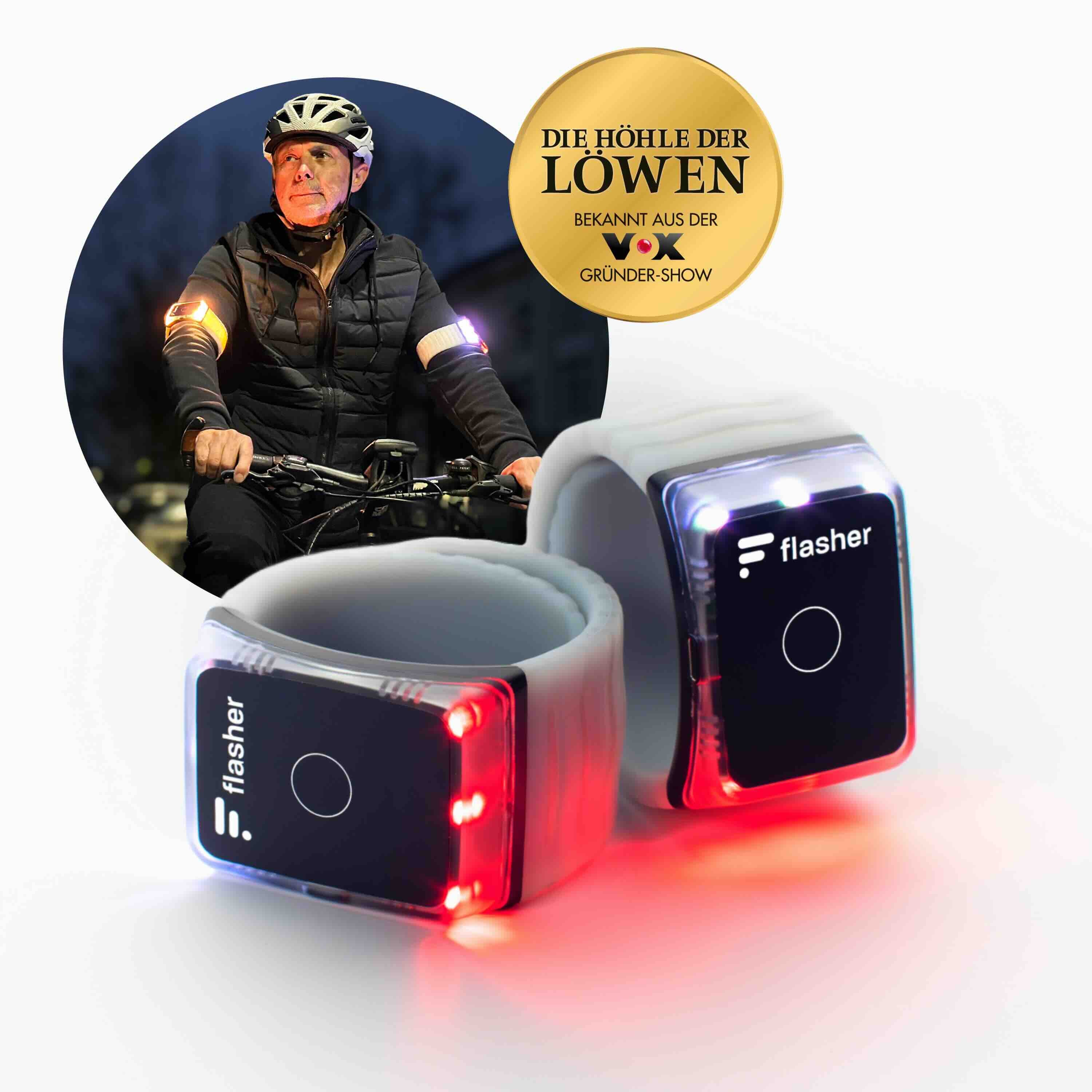
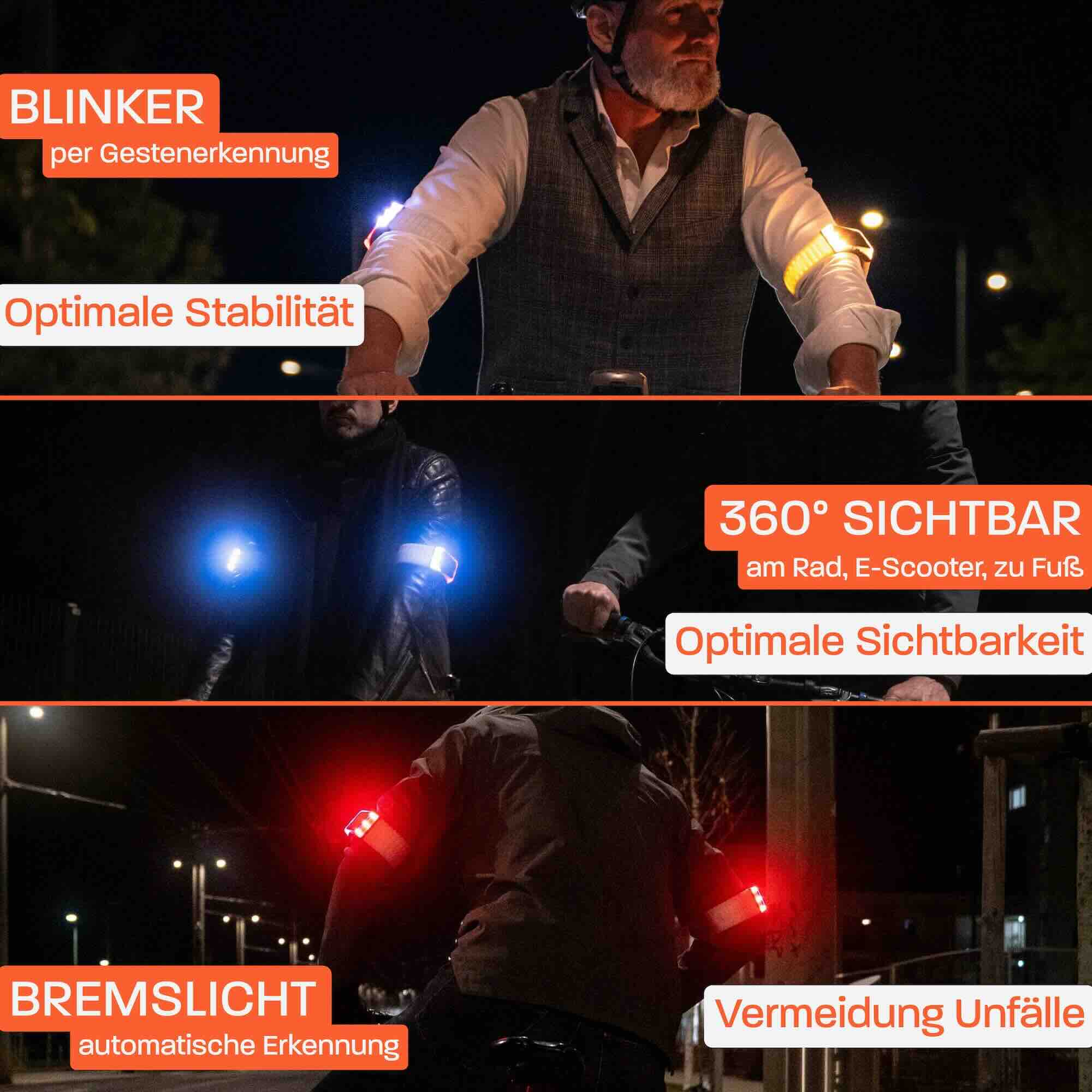

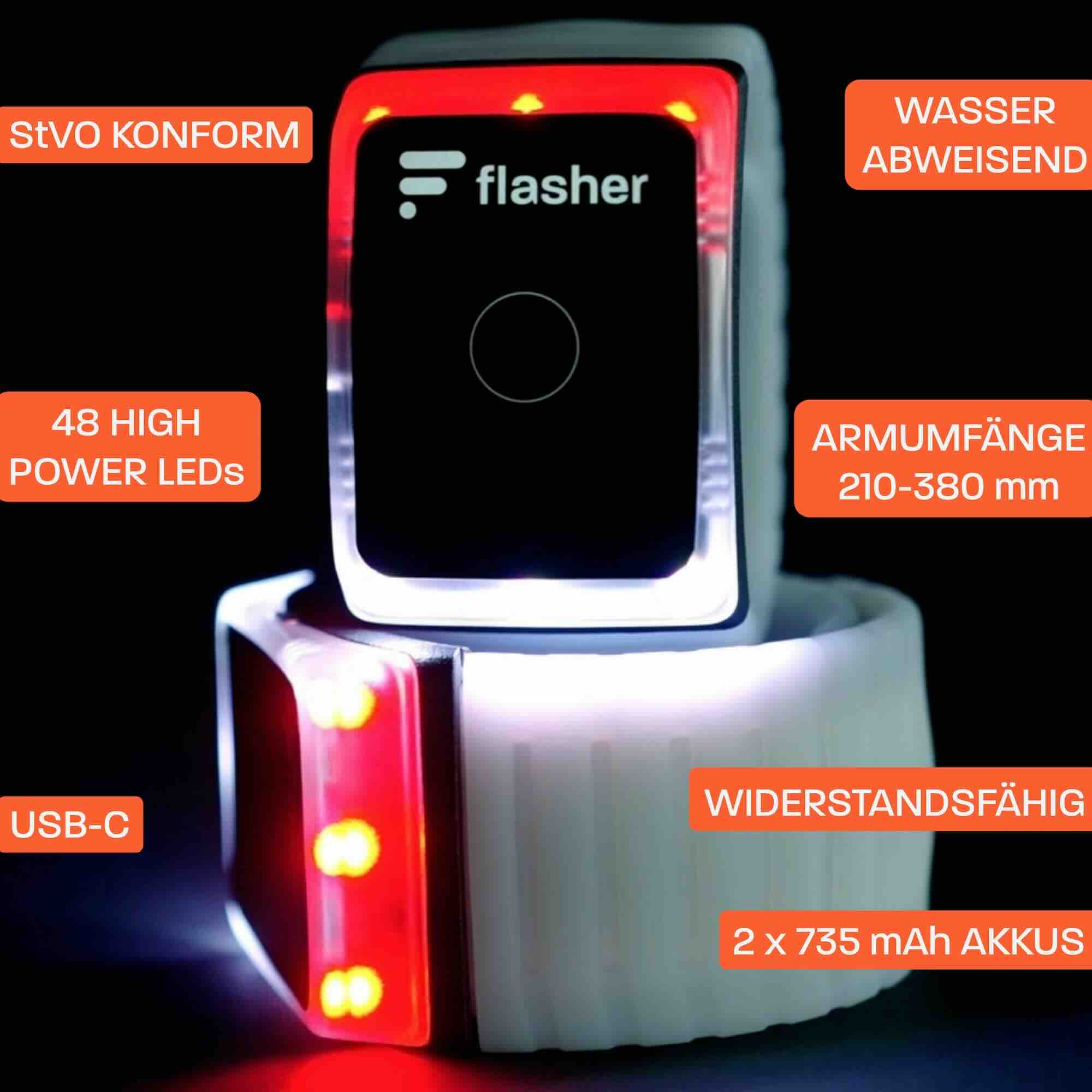
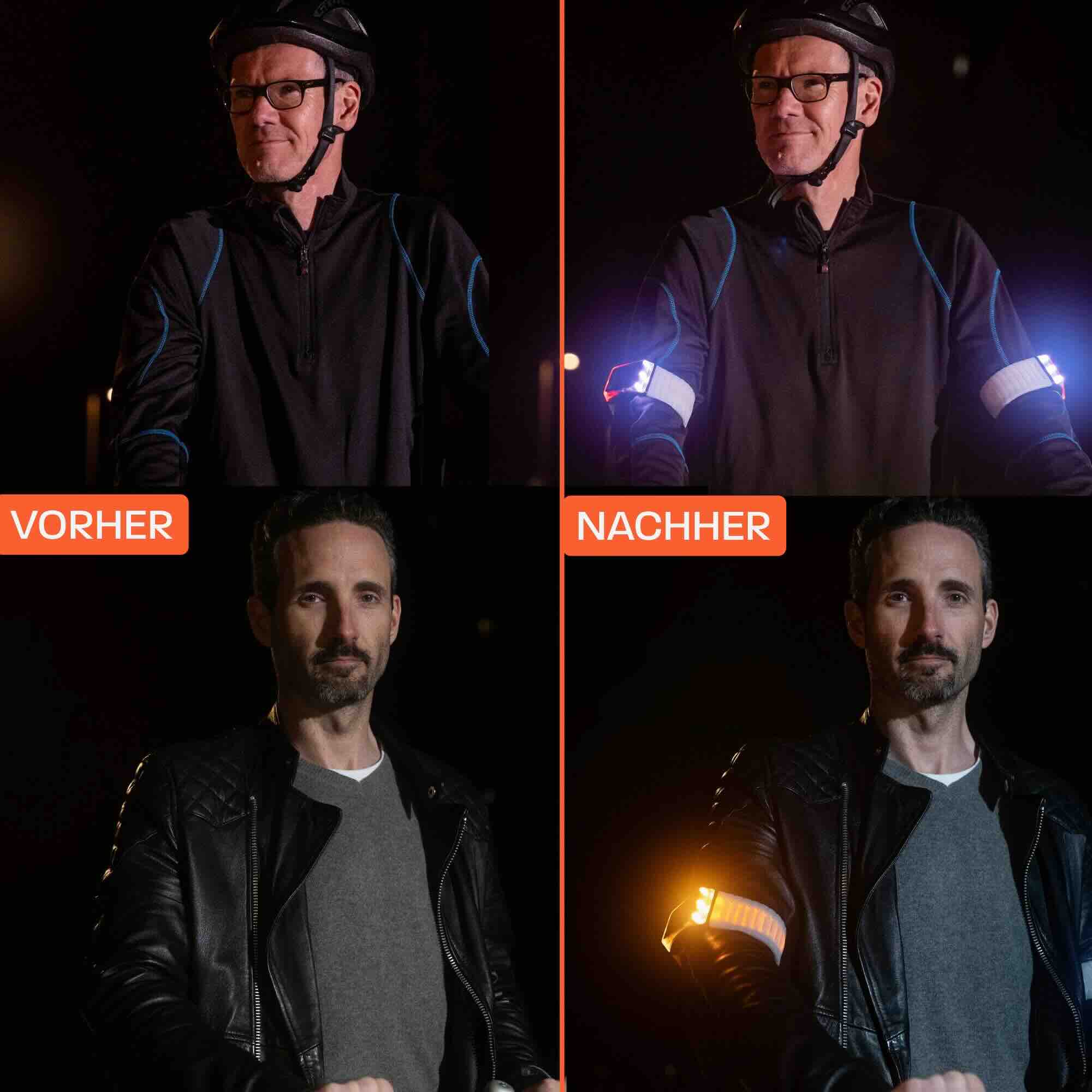
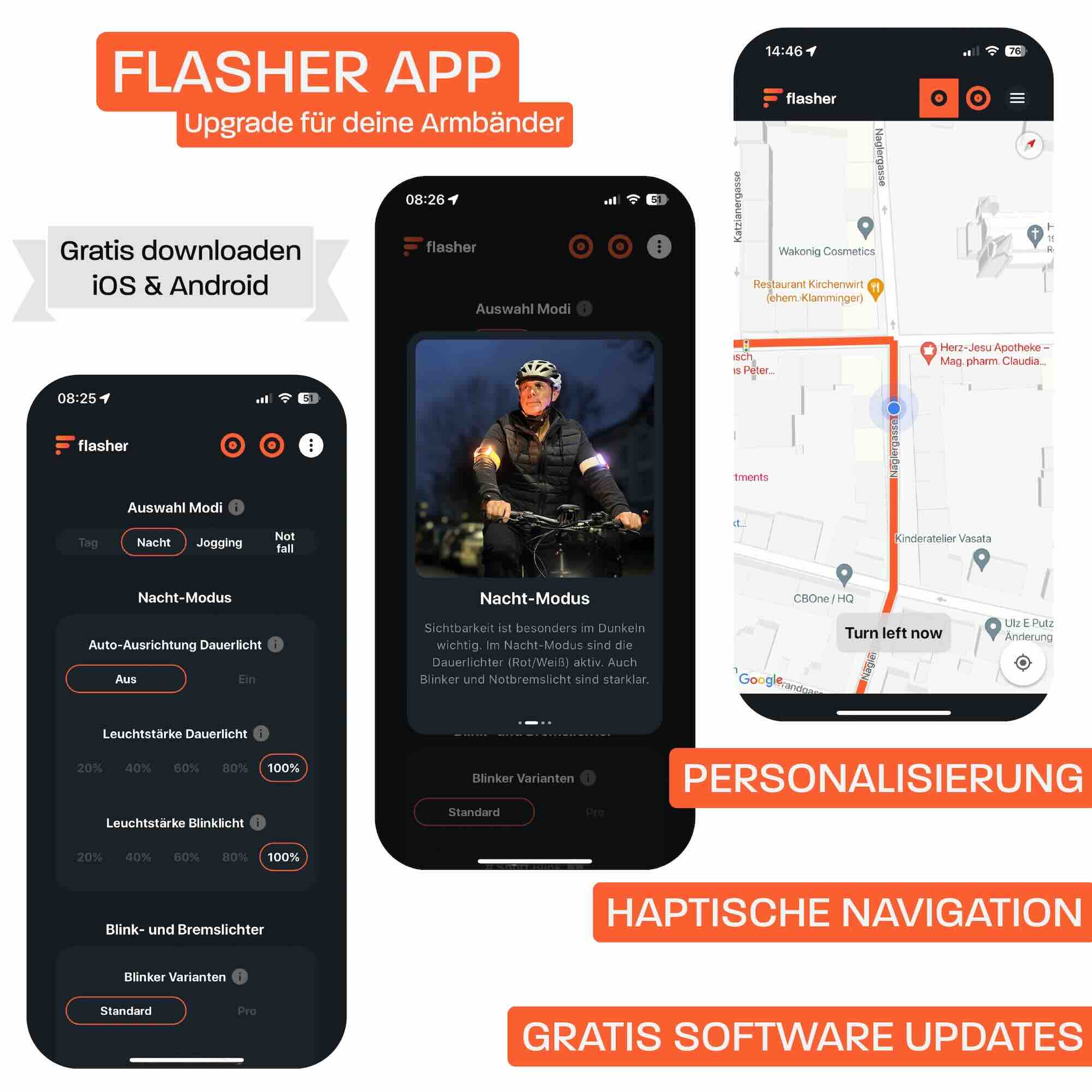


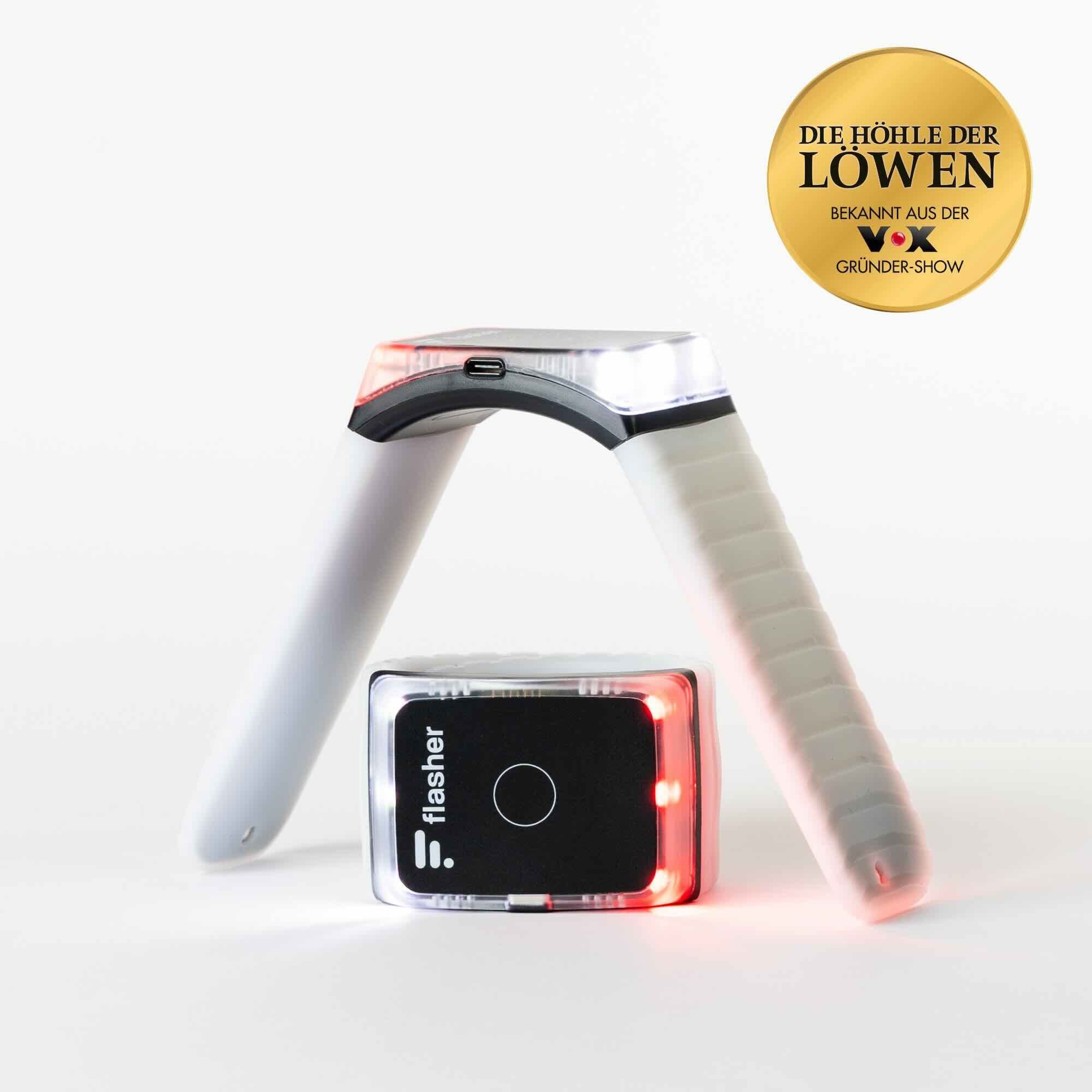
Flasher Duo
The smartest bicycle and e-scooter lights in the world:
- Gesture control turn signal indicators
- 4 modes with ultra-bright 360° LEDs
- Automatic emergency brake lights
- Compliant with road regulations & water-resistant
- Additional features via Flasher app [optional]
Turn signals are better on the body than on the e-bike
admissibility
There is currently no way for cyclists in Germany to legally retrofit indicators on e-bikes. Indicator helmets, indicator gloves and flashers are worn on the body and are therefore already permitted. In Austria and Switzerland , permanently installed e-bike indicators can also be used.
Cost
Costs for e-bike indicators range from under €20 for the cheapest products to almost €300 for some indicator helmets.
Many turn signals that are only mounted on the e-bike with a simple connection can be found in the price range up to €30. Handlebar indicators that are screwed more firmly into the handlebars already cost over €50.
If you want to permanently install the e-bike indicator in the bike, you can find good models starting at €200. However, if indicators are attached to the vehicle, there are additional installation costs or effort . The installation of a sensible set of indicators, which is carried out properly by a specialist bicycle workshop , can add up to costs of around €150 . Wiring with the e-bike battery costs up to an additional €100 - €150.
When it comes to helmet indicators, it all depends on the equipment: the cheapest helmets cost from €130. Good models tend to be in the €180 to €240 range, but it should be noted that essential accessories - such as the remote control with which you can use the indicator - often cost an additional €20-€40 .
Flasher costs €199, so it's mid-range in terms of price, but doesn't require any assembly or additional accessories.
flexibility
Fixed indicators form a unit with a specific vehicle. If you change the bike, you have to remove them again and remount them on the new bike.
Even if you have more than one vehicle in your household, mounted turn signals may not be the best choice. Because every vehicle needs its own turn signals. Body-worn turn signals have much greater flexibility when they can be used on different vehicles and by different people.
Power supply
E-bikes have the big advantage that they have their own battery. If you mount the indicators on the e-bike and also wire the power supply to the e-bike battery, you don't have to worry about the power for the indicators. Sure, the indicators will then draw from the same source as the drive, but the influence on the range will not be particularly great.
Vehicle-clipped turn signals and body-worn solutions require their own power supply such as batteries or an integrated rechargeable battery.
360° visibility
When turning, it is important that both the cars behind you and the oncoming traffic know what is happening. That's why a turn signal should always be visible from all directions. After all, vehicles also use turn signals that are visible at the front and rear.
When installing indicators, make sure that a set always has 4 indicators, so that you can mount two at the front and two at the back, or a solution like Flasher's luminous wings.
Unfortunately, indicators in the handlebars can be hidden by jackets and your arms, while indicators only on the seat post or in backpacks cannot be seen from the front. Some helmet indicators also only have indicators on the back.
Lighting at eye level
Turn signals must be mounted high enough on the e-bike to be clearly visible. At the front, the indicators could be mounted on the handlebars, but at the rear it is a little more difficult. As mentioned above, drivers will pay attention to the arms and upper body purely out of habit, as that is where the hand signal comes from. Turn signals at the height are exactly in the drivers' usual field of vision. Indicators can also be seen better higher up, for example on the head, than when they are mounted on the vehicle.
Clear distinction of direction
Last but not least, it is important for road safety that left and right can be clearly distinguished. If the flashing lights are built too close together, this distinction is no longer very accurate even from short distances.
E-bike indicators should therefore be mounted at the front of the handlebars and at the rear of telescopic rods in order to be wide enough. Turn signals on helmets have the disadvantage that there is little space on the head to separate left from right and that the turn signal is turned to the other side when looking over the shoulder (i.e. the turn signal is moved to the right by turning the head when turning left).
It can also help to differentiate if there is a reference point between the flashing lights, such as the body and license plate of a car, the taillight of a bicycle or the upper body of a flasher.
Flash on the e-bike in accordance with the StVO
Turn signals for e-bikes have a lot of advantages. In order for them to increase security, you just have to use them in accordance with the law.
Indicators that are worn on the body are already StVZO and StVO compliant and correspond to the Swiss VRV. Indicators on e-bikes can be retrofitted in Austria and Switzerland.
Take a closer look at how you can legally use indicators such as flashers on bicycles and e-scooters , and whether indicators on bicycles replace hand signals and count as a valid turn signal.


